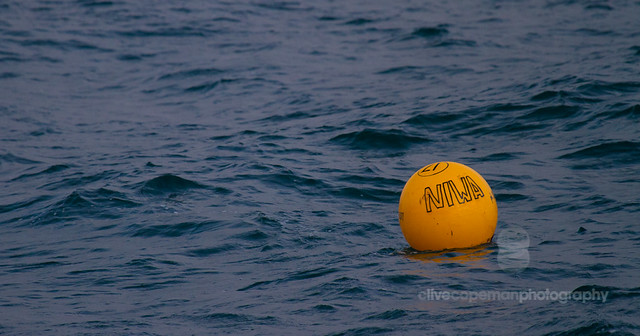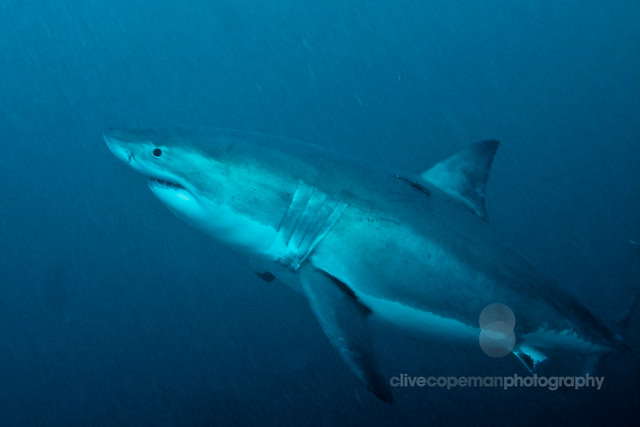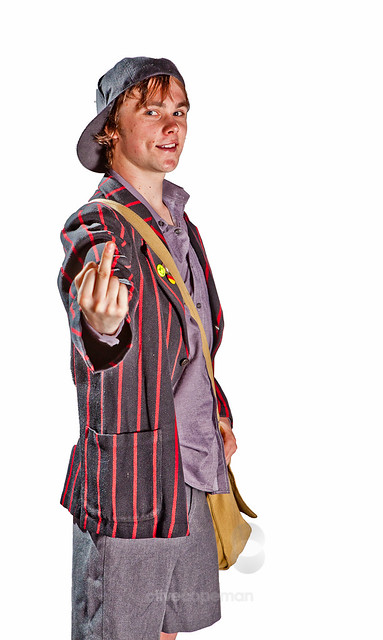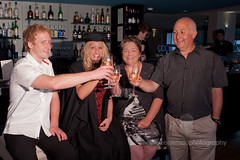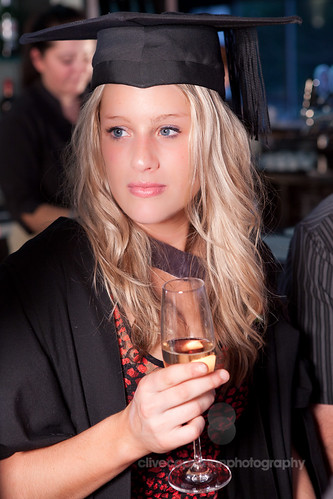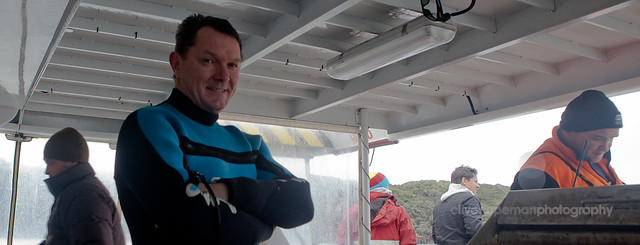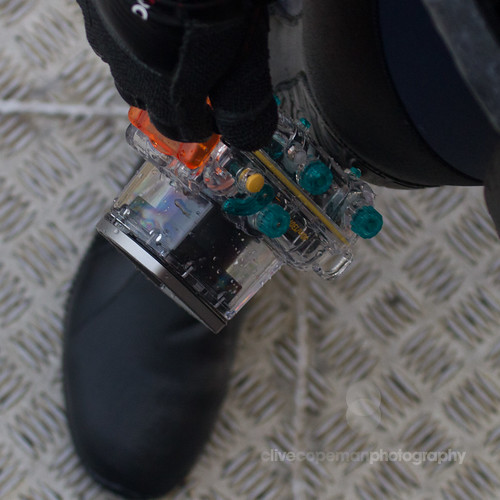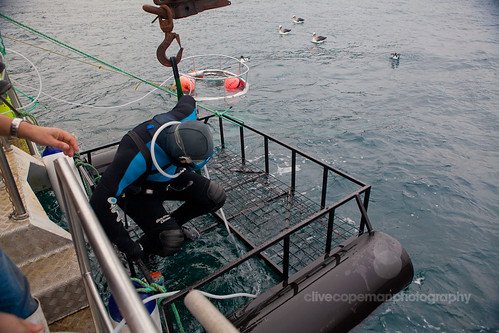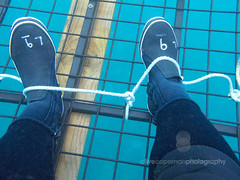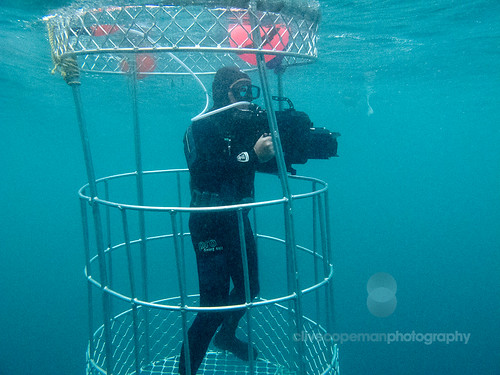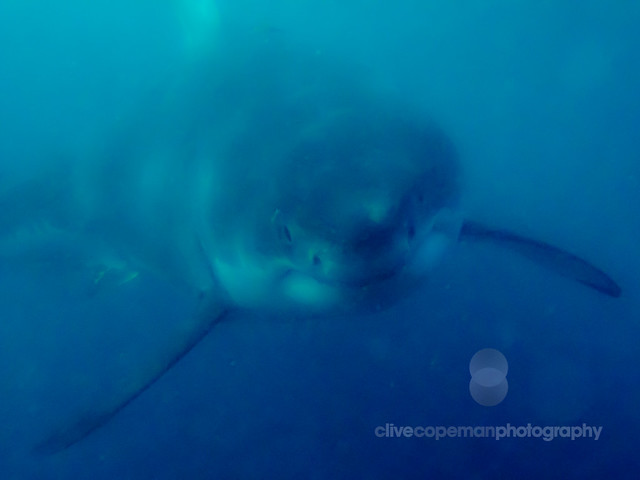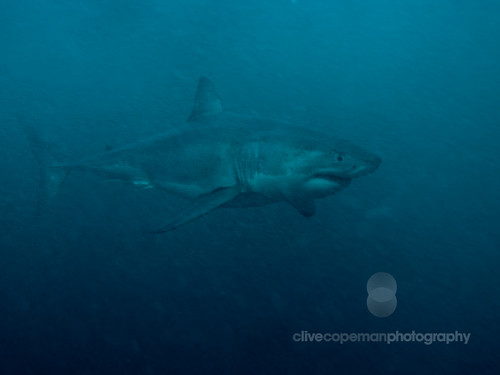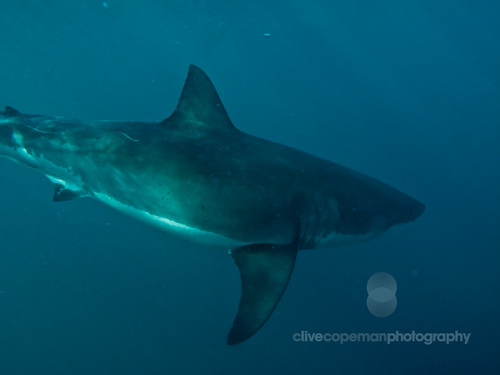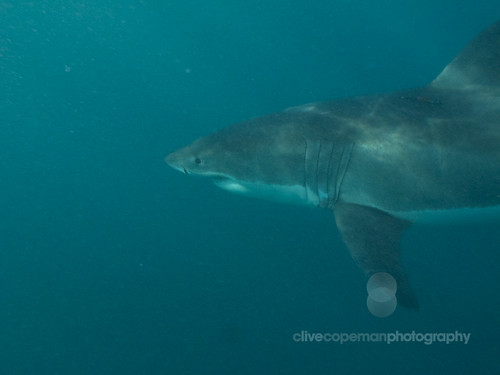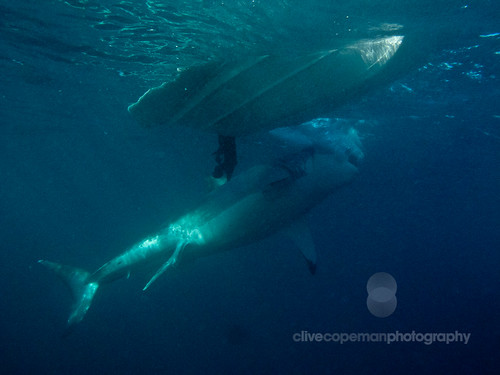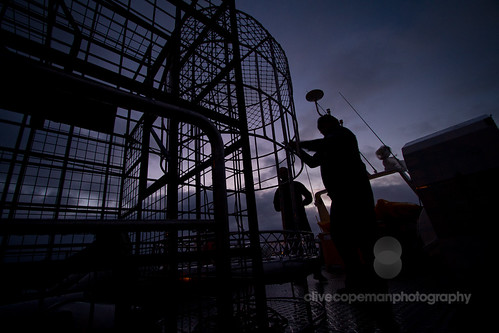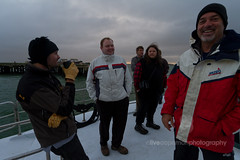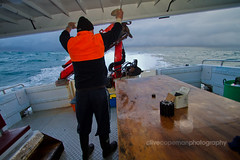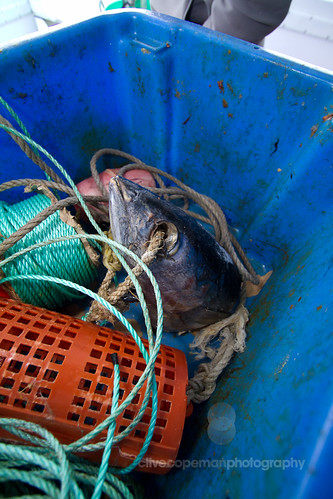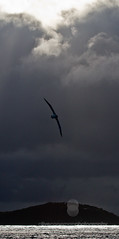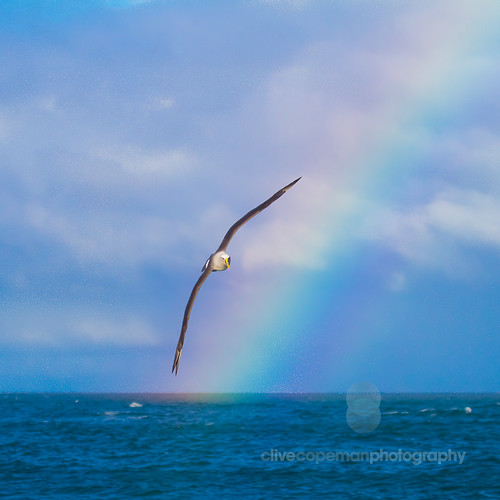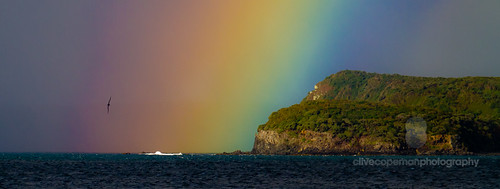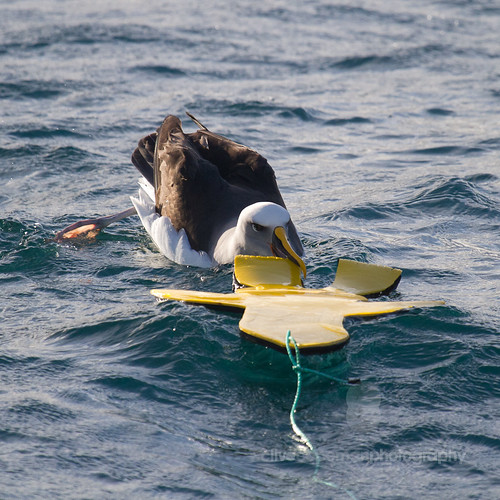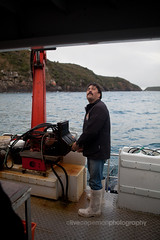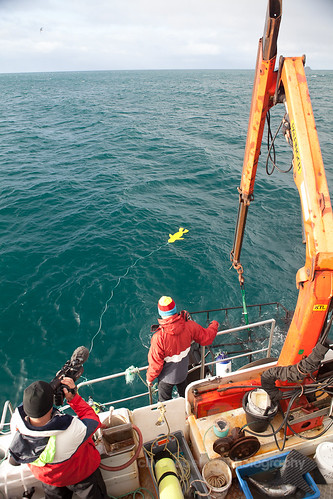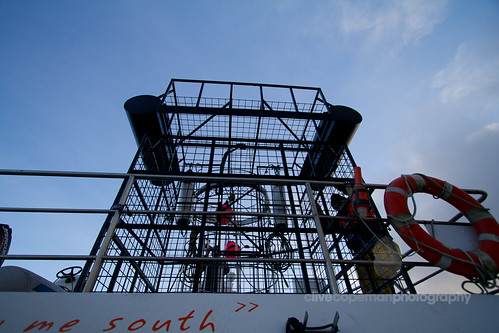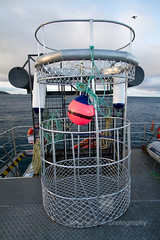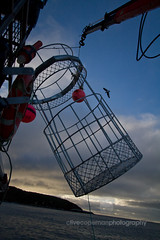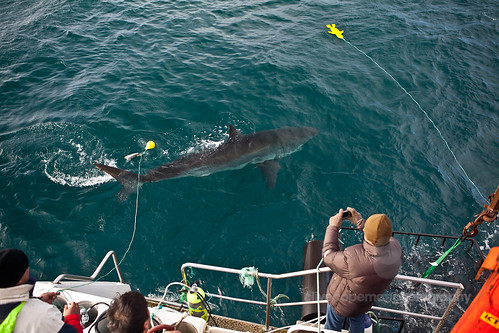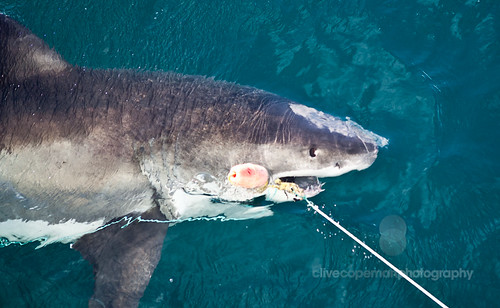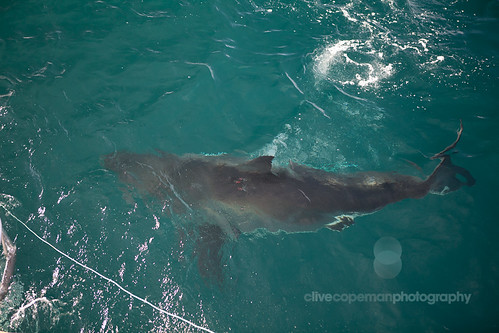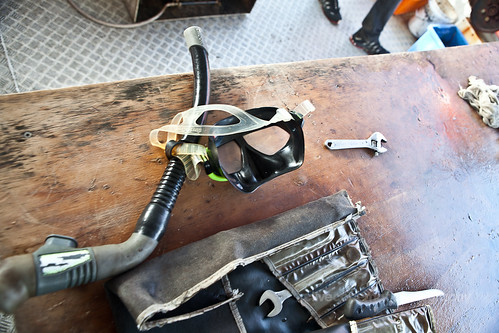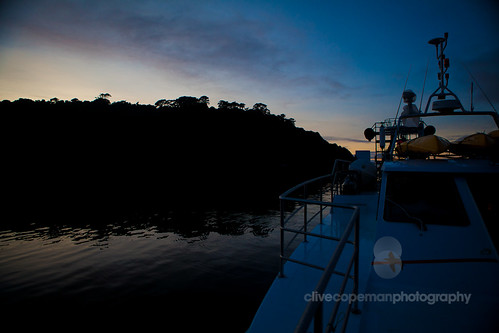
Friday morning dawned beautifully at our sheltered anchorage at Port William, Stewart Island NZ. We all roused in the darkness at 7.00 am and to my surprise, I had a tiny,
tiny headache, possibly due to the several beers, the large scotch and the glass of celebratory shark-diving port I had had the night before. I went up on deck to be greeted by the morning chorus of Kiwi and Kaka from on shore and knew it was going to be another great day.
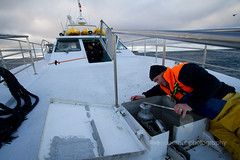
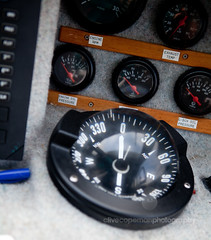
The first order of the day was breakfast for 13 hungry men. Easy: Fried eggs, bacon, mushrooms, toast, baked beans and a mug of tea. Headache dealt to. Time for deckhand Johnno to haul up the anchor and Skipper Mike to guide us to the next dive spot, where he usually saw big female white sharks. It was only 15 minutes away, just around the point from the spot we'd been at the day before. Anchor down, cage in, and berley cast on the water, in about 20 minutes a smallish male arrived to check out the bait. When I say smallish, that's still just over 3 metres. It was looking good, until an unforeseen complication arose.
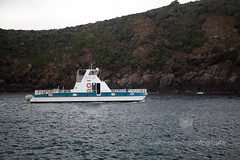
The Undersea Explorer, a semi-submersible vessel showed up about 200m away, and chucked down their own berley trail, tempting our shark away, and probably any others that were in the vicinity. If there had been paying customers aboard it would have merely been rudely competitive, but it was only manned by a couple of crew, having a little fun before taking the boat over to Bluff. Then they circled our position, adding to the confusing scent trail for the sharks. Skipper Mike got on the blower and with much restraint, requested they ship out, which thankfully, they did.
Suddenly though, things went pretty quiet. We waited at least another forty minutes and saw no more sharks. Dark clouds were gathering, it was cooling down and our sheltered position was starting to feel the growing swell. With no sharks about, nobody was that eager to get into the water and wait. So the Skipper decided to hop into the inflatable boat and scout the previous day's position for us, to see if the swell was affecting it. He returned with the news that it looked like a better spot, and we moved there.
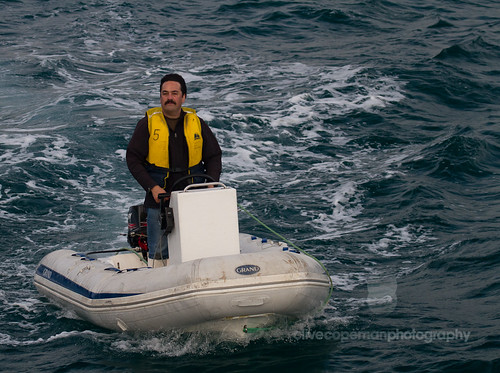
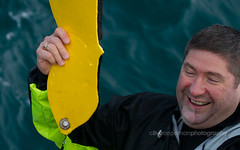
Not long after we had anchored up, it looked like the same male white shark had followed us there and started hitting the bait. His behaviour was different to the slow inquisitive passes of yesterday's sharks. He wasn't exactly aggressive, but he came and went in hunting mode, coming up unseen from the bottom every time, hitting the bait or decoy quickly, and disappearing again. He came so quickly one time, we didn't pull our seal decoy away in time and he bit a flipper off, which quite amused Craig.
Cage secure, it was time to dive again. My mate James Hacon was having camera issues, so I lent him mine. Little did I know he'd get one of the best shots of the trip on it, and then just to rub it in, he took a "who's your daddy?" shot of himself.
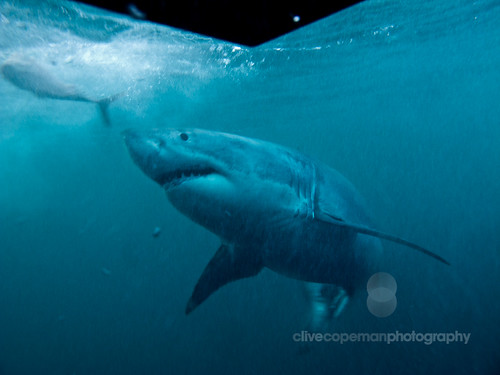
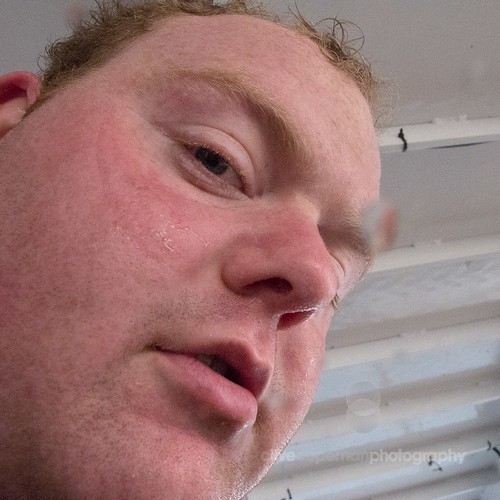
By now, Lemuel was starting to have second thoughts about just enjoying the action from topside. Nobody was applying any pressure, although we dearly wanted him to have the same experience we had of these wonderful creatures. I was thrilled when he decided to give it a go, and while he got some quick instruction from Mike, I suited up so there'd be a friendly face in the water with him.
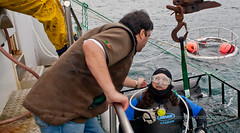
When we got in, it was obvious that Lem was enjoying the experience.
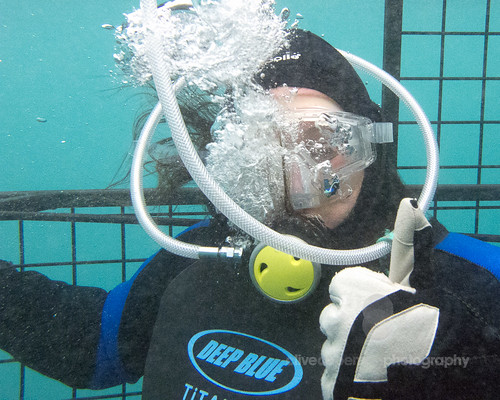
Mike Bhana was in his cage alongside us, working with his 3D video camera (Mike's heading away around the Pacific filming a 3D underwater TV series soon) and I managed to get a nice picture of him doing a typical day's work:
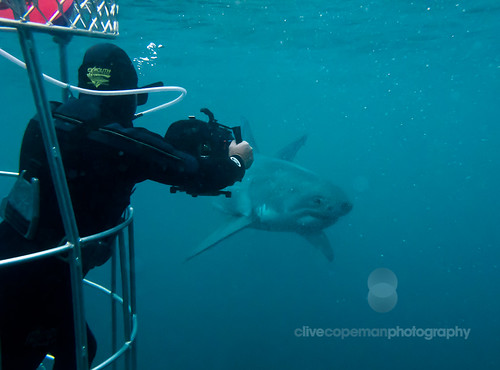
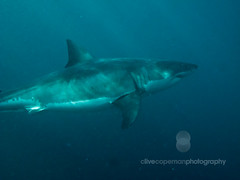
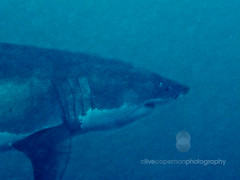
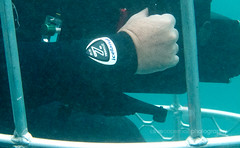
Now I'm used to seeing Mike filming big predators underwater, often without a cage. He knows I'm not impressed any more. What does impress me is that he does it in this water without gloves. Now that's brave. But it's pretty hard to control a still camera underwater, never mind the intricate controls of a Hi Def 3D video camera. Gloves just don't work.
After about 20 minutes watching that male, I was done and so was Mike and the other guys. Plenty of pictures and tales to tell, it was time to get out of the cage, into a hot shower, and warm clothes for the trip home. We were all pretty satisfied and I think every one of us would do it again. Lem confirmed it on the drive home. He was hooked.
So my thanks to the team for their fine company and a great adventure: Skipper Mike Haines, deckhand Johnno, Mike Bhana, Clarke and Tony Gayford, Kaiser McCormack, Ulrik Olsen, Antony Wyborn, Jonathan King, James Hacon, Lemuel Lyes and Craig Cassidy.

Now if this were a fairy tale, this would be the end. But there was no monster here, just some wonderful wild animals; no heroes, just a boatload of blokes having fun and no moral, but a very nice consequence.
As soon as I started to tell this tale, someone saw my blog entry and something small but very cool transpired.
More in the pipeline.
